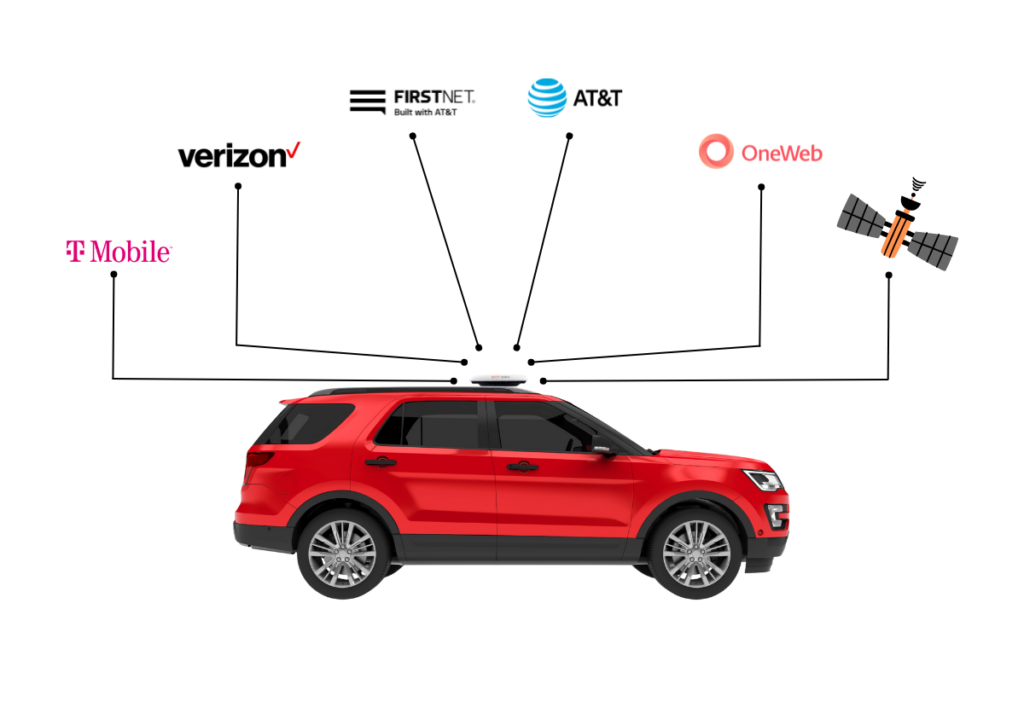BLOG
The Evolution of Wireless Communication — And Where It’s Headed in 2025
From 1G to Blended Connectivity: The Journey to Always-On, Mission-Critical Communications
The story of wireless communication began over 40 years ago with analog signals and bulky devices. Since then, we’ve moved from simple voice calls to real-time video, smart sensors, and advanced IoT applications—all riding on a wave of rapid innovation.
But while the “G”s get the glory, what truly matters today isn’t just the network generation—it’s how you stay connected when the unexpected happens.
Let’s take a look at where we’ve been, where we are, and how IP Access International is enabling what comes next.
The Generations of Wireless Technology
1G: Analog Beginnings (1980s)
- Key Features: Analog voice only, poor quality, no data
- Limitations: No encryption, poor handoffs, high interference
2G: Digital Voice + SMS (1990s)
- Key Features: Digital GSM, SMS and MMS, basic data
- Milestone: First text message sent in 1992
3G: The Mobile Internet (2000s)
- Key Features: Mobile browsing, email, video calls, GPS
- Impact: Birth of the smartphone era
4G: Mobile Broadband (2010s)
- Key Features: HD video, mobile gaming, app ecosystem
- Technology: LTE and later LTE-Advanced pushed speeds to ~1 Gbps
5G: Ultra-Fast, Low-Latency (2020s–Present)
- Key Features: Speeds up to 10 Gbps, <1ms latency, supports up to 1M devices per sq. km
Why it Matters: Powers smart cities, autonomous vehicles, IoT at scale

What’s Beyond 5G?
5G opened the door to massive IoT and ultra-reliable low-latency communications. But what happens when networks get overloaded, cell towers go down, or you’re operating in rural or disaster-prone areas?
That’s where the future of wireless lies—not just in faster networks, but in blended, resilient connectivity.
The Rise of Blended Connectivity
IP Access International is helping customers leap beyond the limitations of any single network by offering fully blended communication ecosystems. Here’s how:
SuperGIG™
- A managed, multi-path solution that combines cellular (multi-carrier), LEO satellite, and GEO satellite networks.
- Always-on connectivity even in remote, rural, or disaster-struck environments.
- Supports voice, data, video, apps, sensors, and more.
Private Wireless Networks (4G/5G CBRS)
- Secure, on-site LTE/5G coverage for off-grid industrial or emergency operations.
- Works with everyday iOS and Android phones—no special devices needed.
- Ideal for first responders, mining, utilities, and manufacturing.
Low Earth Orbit (LEO) Satellite
- Fast, low-latency satellite communication using Starlink or OneWeb.
- Integrated as part of SuperGIG™ or as standalone solutions for fleet, mobile command, and remote IoT.
Network Blending Technologies
- Uses smart algorithms (via Dejero, Peplink, Cradlepoint, etc.) to bond LTE, 5G, and satellite links.
Automatically optimizes performance, eliminating single points of failure.
Read: Starlink vs. OneWeb: Why SuperGIG™ Delivers The Best of Both 2025 Version
Why This Matters in 2025
Today’s operations—whether in emergency management, remote energy fields, or on mobile fleets—can’t afford to lose connection. It’s not just about speed anymore. It’s about:
- Resilience: What happens when one carrier fails?
- Coverage: Can your network follow your team wherever they go?
- Simplicity: Is your team bogged down with manual switching or SIM swaps?
Real-World Applications
Wildland Firefighters: Real-time mapping, radio-over-IP, and coordination even in mountainous terrain
Emergency Medical Services: Connected ambulances, live video consults, remote patient data
Utilities & Energy: Always-on SCADA, video feeds, and operational alerts across large geographies
Fleet Vehicles: Multi-carrier mobile routers with satellite fallback for rural ops

What's Next?
As 5G matures, the real differentiator will be how well you blend technologies together to match your mission. That’s what IP Access International is building toward every day—with customer-focused solutions that work anywhere, anytime.
Let’s Talk About Your Connectivity Strategy
Whether you’re deploying in a wildfire zone, managing a remote fleet, or designing a smart grid, we’ll help you build a wireless ecosystem that works for your mission.